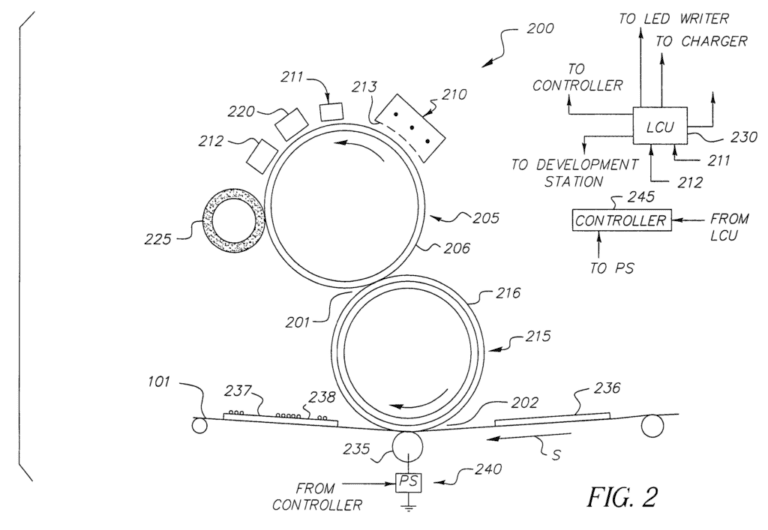by Dennis Crouch
To Midwest Athletics and Sports Alliance LLC (I fed. Cir. 2021)
MASA sued Xerox for infringement of 20 different patents all related to printer-related technology. The district court determined that 20 patents were too many to handle and so ordered MASA to reduce the number of asserted patents to 8 patents by the summary judgment stage before trial. and then further drop to only 4 patents granted through trial. Defendant agreed that the invalidated patents would be dismissed without prejudice and that any applicable statute of limitations would be tolled — allowing those claims to be refiled.


Courts routinely limit the number of claims that can be asserted, but here the district court “acknowledged that it knows of no other court that has similarly held that it has the authority to limit the number of patents that a plaintiff may assert (in as opposed to the number of claims) in the context of case management.' MASA report. The court routinely uses case management powers to limit issues that are litigated — and usually prompt the parties to work together to resolve their issues through some kind of negotiation: Plaintiff dismisses claims / defendant withdraws defenses or counterclaims. Here, MASA proposed such an approach “MASA proposed a balanced approach consistent with case limitation precedent, in which MASA would limit the infringement case by reducing the number of asserted claims in certain parts of the case, and Xerox would limit the invalidity case by reducing the number of invalidity theories'. ID card. However, the court ordered MASA to remove the patents from the case entirely.
MASA argued that ordering the elimination of entire patents is different from eliminating specific claims because each patent offers a distinct cause of action. However, the Federal Circuit has denied MASA's petition for a writ of mandamus. In particular, the court held that dismissal without prejudice and tolls provides sufficient safeguards and “negates any concern that MASA will be deprived of any substantive or procedural right here.”
= = = =
Patents at issue: U.S. Pat. No. “), 8,019,255 (“'255 Patent”), 8,634,113 (“'113 Patent”), 6,718,285 (“'285 Patent”), 6,909,856 (“'856 Patent”), 6,799,005 (“113 Patent”), 6,799,005 (” 6,6″), “'756 Patent”), 6,509,974 (“'974 Patent”), 6,411,314 (“'314 Patent”), 6,724,998 (“'998 Patent”), 6,993,278 (“'278 Patent”), 7,655 “37'3, ), 8,220,795 (“'795 Patent”), 8,554,089 (“'089 Patent”), 8,591,022 (“'022 Patent”) 8,805,239 (“'239 Patent”). According to MASA, “Eligible Patents can be grouped into four general categories: (1) Roller/feeder patents ('3005, '255, and '113 patents); Pentachrome Patents ('415, '425, '582 Patents); (3) Printer Performance and Maintenance Patents ('285 and '856 Patents); and Work Flow Patents ('9005, '314, '974 and '756 Patents). MASA accuses various models of Xerox office equipment of infringement, including printers, scanners and
multifunctional systems”.

